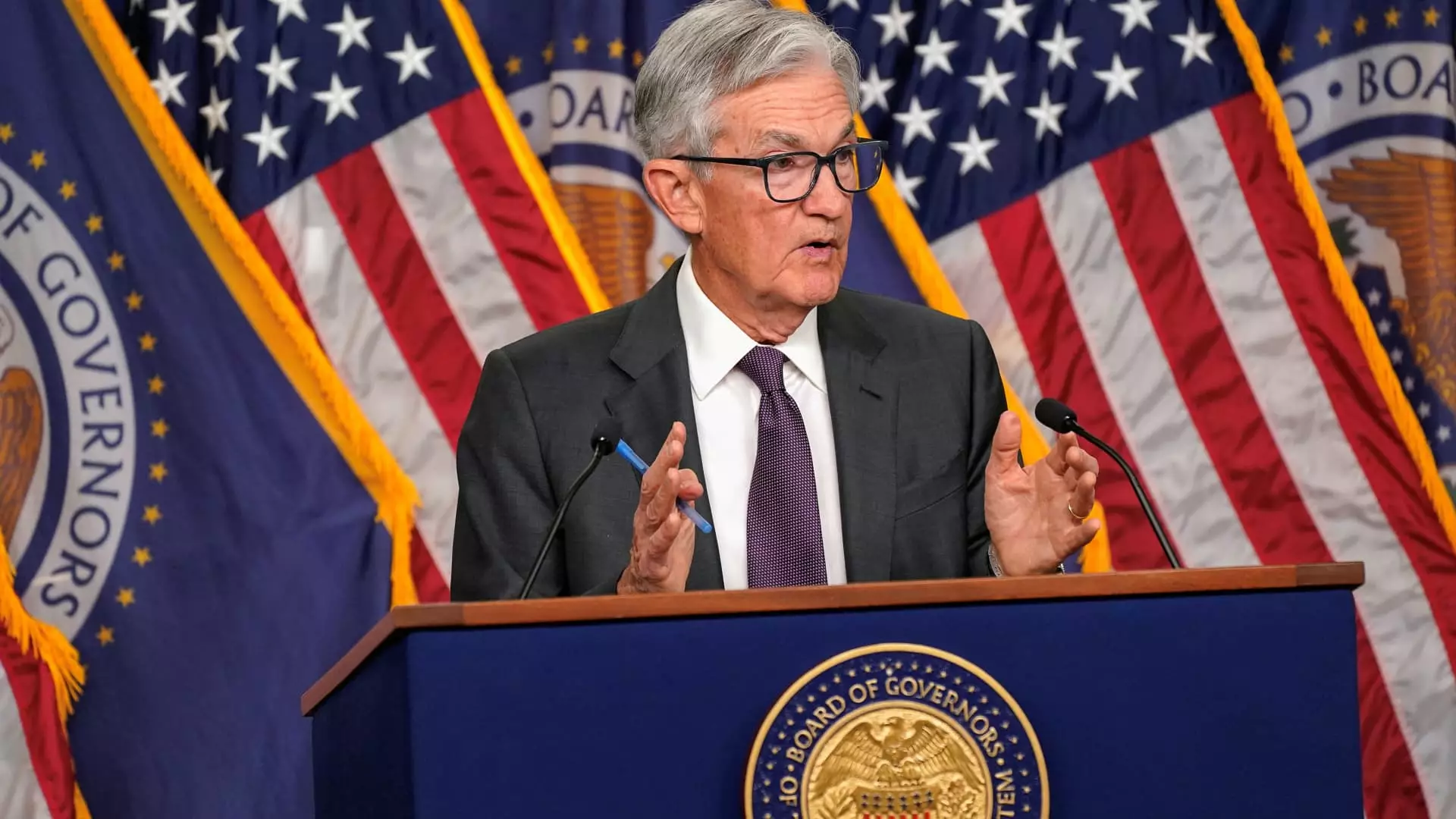The recent decision by the Federal Reserve to hold interest rates steady amid a turbulent economic landscape reflects a complex interplay of factors, raising concerns about the overarching stability of our economy. With an interest rate range maintained between 4.25% and 4.5% since December, the Fed finds itself at a crossroads, pressured by a slowing economy exacerbated by tariffs that have rattled both markets and consumer confidence. Although the decision seems calculated, it reveals deeper issues that undermined economic integrity and merit a critical examination.
The Gray Cloud of Tariffs
Tariffs imposed by the Trump administration have served as a double-edged sword, complicating the economic picture significantly. While officials hint at possible rate cuts by the end of the year, the ongoing trade disputes create uncertainty that lingers over American businesses and consumers alike. Increased costs associated with imported goods can lead to inflationary pressures, dampening spending further. Thus, while the Dow Jones experienced a temporary bump following the Fed’s announcement, the underlying economic stability appears to be increasingly precarious, as tariffs obscure any potential for a robust recovery. The persistent threat of additional tariffs adds further ambiguity, highlighting an urgent need for a more stable trade policy that prioritizes long-term economic health over short-term gains.
The Fed’s Balancing Act
In a striking show of cautious optimism, Federal Reserve Chair Jerome Powell reiterated the central bank’s dual mandate of stabilizing prices while fostering full employment. However, the ambiguous nature of current economic projections could hinder a clear path forward. With the FOMC downgrading its outlook for growth to only 1.7% for the year, it raises questions about how effectively the Fed can navigate between these competing priorities. Furthermore, Powell’s acknowledgment of “moderation in consumer spending” and a distinct uptick in inflation projections (now at 2.8%) suggests a gradually tightening grip on economic activity—a situation that could erode consumer confidence and spending even further.
The Dangers of a Delayed Response
Investors may perceive the Fed’s policy of maintaining higher rates as a sign of economic resilience, but this could ultimately be a dangerous miscalculation. The notion of simply waiting for an inevitable rate cut could mask deeper issues that require immediate intervention. For instance, as payroll growth stagnates and unemployment metrics show signs of weakness, waiting it out could lead to a more severe economic downturn. A reactive rather than proactive approach, especially in the face of an ambiguous economic outlook, risks creating a self-fulfilling prophecy, wherein hesitation exacerbates the very conditions that the Fed aims to alleviate.
The Impact of Quantitative Tightening
Another major element to dissect is the Fed’s recent decision to scale back its quantitative tightening program. While reducing the rate of bond roll-offs from $25 billion to $5 billion may seem prudent, it also raises questions about the effectiveness of the Fed’s balance sheet management strategy. If the authority attempts to provide stimulus by merely slowing the pace of asset reduction, we might see an illusion of stability without addressing the underlying economic concerns. Furthermore, Fed Governor Christopher Waller’s dissenting opinion signals a worrying lack of consensus within the central bank regarding the best path forward.
Consumer Confidence at Risk
With consumers increasingly jittery about their finances, inflation expectations are rising in tandem with uncertainty regarding tariffs. When corporations hesitate to invest or hire due to fear of mounting costs, the ripple effects on the labor market can be damaging. Data suggesting the labor market is beginning to show signs of strain is particularly alarming. Should consumers pull back on spending, as Powell remarked, further weakening the economy in turn, the risks of stagnation become ever more pronounced. This scenario underscores a crucial aspect of the Fed’s dilemma: the central bank cannot afford to ignore consumer sentiment in the name of preserving lending rates.
The current environment is fraught with challenges, and although the Federal Reserve’s cautious approach aims to navigate these turbulent waters, it risks chilling economic growth and eroding long-term stability. As policymakers grapple with pressing global dynamics and domestic pressures, it is essential to prioritize robust and thoughtful economic strategies that foster resilience over mere short-term fixes. The path ahead must be navigated with the utmost care, as the stakes are undeniably high for every American family and business.


Leave a Reply